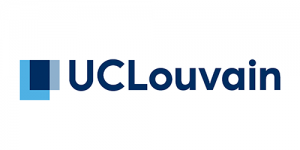Défense de thèse de Madame Alham Sentil
Promoteurs de thèse : Denis Michez (UMONS) et Pierre Rasmont (UMONS)
Résumé:
Evidence of pollinator declines have been reported in all continents. Yet, the costly mitigation strategies suggested to mitigate this decline are not feasible in all countries, including Morocco. The main purpose of this thesis is to assess the effectiveness of the agricultural Farming with Alternative Pollinators “FAP” approach that uses Marketable Habitat Enhancement Plants “MHEP”, to support wild pollinator communities and promote pollination service in agro-ecosystems. We developed accordingly an experimental set up in 4 regions in Morocco including control fields (only main crop) and FAP fields (main crop + MHEP). The Ph-D is divided in four chapters presenting the main results of this project.
In the first chapter, we present an exploratory study conducted with faba bean (Vicia faba) as main crop to investigate the impact of the FAP approach on the abundance and species richness of pollinators visiting the main crop and the whole FAP fields. Results showed that the FAP approach was significantly effective in increasing pollinator variables in the whole FAP fields compared to control fields. However, the approach displayed a neutral effect on the insects visiting the main crop (i.e. faba bean).
The second chapter questions the effect of the FAP approach on six leading food crops in four different regions in Morocco and also assesses whether crop, MHEP composition (i.e. mean phylogenetic distances among crop and MHEP), and climate variables (i.e. monthly mean temperature and monthly precipitation) drive the success of the FAP approach. The results of this study showed that the FAP approach enhanced pollinator variables at the whole field level and induced a spillover of pollinators toward the main crop. Mean phylogenetic distance between the main crop and MHEP was a significant predictor of the effectiveness of the FAP approach, whilst climatic variables were poor predictors.
In a third study, we explored proximal consequences of the FAP approach on the conservation of pollinators by analyzing their pollen diet. The experiment was performed using pollen load analyses of faba bean and pumpkin flower visitors. Results of these analyses revealed that pollen from main crops were poorly represented in the scopae of the characterized species, indicating that crops were mainly visited for nectar, and hence visitors may need more alternative pollen sources in order to meet their nutritional needs. The FAP approach significantly enhanced the number of pollen types collected by bees compared to control fields. Additionally, MHEP offered supplementary floral resources (i.e. pollen) to pumpkin and faba bean flower visitors.
Finally, we assessed whether the pollen resource from FAP plants are a limiting factor to cater regional pollinator community by evaluating the importance of out-crop floral resources (i.e. native wild flowering plants). Results showed that pollinator species richness was significantly higher in FAP fields compared to monoculture of flowering crops and wild plants. Nevertheless, a great proportion of pollinator species were unique to wild plants, and therefore the FAP approach and maintenance of the surrounding native flowering plants should be both supported to conserve diverse regional pollinator community.
Overall, the FAP approach with the use of MHEP appears to be an effective approach in supporting pollinators and promoting crop pollination in agro-ecosystems.






